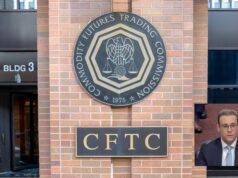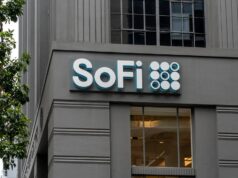The Terra Luna Classic (LUNC) community is banking on a massive token burn strategy to help salvage the project’s future. Recent burns reached over a billion tokens. While this approach aims to curb LUNC’s hyperinflated supply, industry analysts are divided on whether burns can realistically generate lasting value. In an increasingly competitive market, Terra Luna Classic faces the dual challenge of attracting new users while reassuring a wary investor base. Can burns and governance proposals really be the foundation for a sustainable LUNC revival?
Token Burns and Deflationary Hope
At the heart of the Terra Luna Classic community’s strategy is the concept of token burning – permanently removing tokens from circulation to decrease supply and, ideally, increase value. This approach is based on fundamental supply-demand economics: with fewer tokens in circulation, scarcity should theoretically drive demand and push up the price. Binance, one of the largest cryptocurrency exchanges, recently executed a billion-token burn, bringing renewed attention to LUNC’s potential.
These token burns are no small endeavor. In a market where excess supply has often driven down token prices, the LUNC community views burns as a means to fight inflation and stabilize the asset. For Terra Luna Classic, which suffered from a hyperinflated supply after the Terra ecosystem collapse, this strategy has become a rallying point for supporters. Community discussions indicate that many see these burns as the first step toward regaining lost value and inspiring renewed interest in LUNC.
Can Token Burns Alone Sustain LUNC’s Value?
The burn mechanism generates short-term excitement and media coverage. However, many experts caution that burns alone are unlikely to yield sustainable value for LUNC. Analysts suggest that burns are a limited tool in driving intrinsic value. That’s especially true for a cryptocurrency with fundamental challenges like Terra Luna Classic. Token burns can provide temporary price boosts by creating a deflationary effect. Yet, without underlying utility or robust ecosystem growth, any price gains may be short-lived.
Additionally, although Binance’s involvement in token burning is a sign of support for LUNC, it’s not necessarily a long-term solution. Binance’s contribution reflects confidence in Terra Luna Classic’s community but doesn’t change the need for a broader strategy. The Terra Luna Classic community needs to expand its utility and increase demand for LUNC beyond mere speculation. Ultimately, tokens gain lasting value through utility, adoption, and consistent user engagement. These factors are not guaranteed by burn mechanics alone.
Governance Proposals and Community-Driven Efforts
The Terra Luna Classic community is also heavily involved in governance decisions, passing proposals influencing tokenomics and network policies. Recently, they passed a tax-handling proposal. It allows a percentage of transaction fees to be burned, adding another layer to the deflationary strategy. Additionally, discussions around re-pegging the USTC stablecoin could restore some functionality to the Terra ecosystem, potentially generating broader appeal for the project.
These community-driven governance decisions reflect the community’s commitment to rebuilding the Terra Luna Classic ecosystem. However, the focus on tokenomics rather than usability may limit LUNC’s appeal beyond its immediate supporters. Governance participation is undoubtedly a positive step. It makes users feel involved in the project’s future. However, without a clear roadmap for technological or practical innovation, Terra Luna Classic may struggle to regain relevance among competing blockchain projects.
Competition and the Broader Market Landscape
Terra Luna Classic is not the only project implementing token burns or community governance. Many other projects, including Ethereum and Binance’s BNB, have similar deflationary models but are backed by substantial user bases and versatile use cases that ensure continuous demand. For LUNC to stand out, it will need to find unique value propositions beyond token burns. In an industry where blockchain applications and decentralized finance (DeFi) evolve rapidly, LUNC risks being outpaced if it doesn’t broaden its focus.
Further complicating Terra Luna Classic’s position is its past reputation. Following the Terra ecosystem collapse, investor trust eroded significantly. Rebuilding credibility in the highly scrutinized crypto space is no easy task. While token burns and tax proposals may inspire existing LUNC holders, they do little to attract new users or use cases essential for long-term growth.
Is There a Path Forward for Terra Luna Classic?
Although the current token burn strategy alone may not be a panacea for Terra Luna Classic’s challenges, it has, at the very least, rallied the community and given them a common objective. For some investors, this community cohesion is a positive signal, indicating that LUNC has a resilient base. However, the project’s long-term survival will likely depend on its ability to diversify its approach. It must prioritize utility, functionality, and ecosystem partnerships that can attract a broader user base.
In addition to burns, LUNC would benefit from new applications, whether in DeFi, non-fungible tokens (NFTs), or other blockchain innovations that can generate sustained demand. Expanding LUNC’s utility could potentially drive meaningful adoption and, consequently, price stability that is not reliant solely on deflationary mechanics.
>>> Read more: SEC vs Terraform Labs $4.6B Landmark Settlement
Token burns may provide short-term gains for Terra Luna Classic, but they are not a standalone solution for rebuilding a sustainable and valuable ecosystem. Without practical use cases and expanded functionality, LUNC risks falling short of its revival goals. The community’s enthusiasm and recent governance proposals are promising. Now, the community must match these with a clear plan to bring innovation and new users into the fold.
In a competitive market, Terra Luna Classic faces an uphill battle to regain investor trust and market relevance. Token burns are a start, but the path to meaningful recovery will require far more than reducing supply. It will demand a comprehensive strategy that combines deflationary measures with real-world utility, expanded partnerships, and technological growth.
Readers’ frequently asked questions
How do token burns actually work, and why are they considered beneficial for LUNC?
Token burns are essentially the act of permanently removing a certain amount of tokens from circulation, reducing the overall supply. In the case of LUNC, tokens are “burned” by sending them to an unspendable address. Effectively, they are unrecoverable and the total circulating supply of LUNC decreases. This deflationary approach is expected to create scarcity, and in theory, increased scarcity should drive demand and ultimately price.
LUNC is grappling with a large circulating supply following the Terra collapse. Its goal is to counteract the token’s hyperinflation and stabilize its price burning some of the supply. The community hopes that as more LUNC disappears from the market, it will become a scarcer and potentially more valuable asset. That would encourage current holders to retain their tokens and potentially attract new investors. However, while the burn mechanism creates short-term enthusiasm, it does not directly create demand or utility for the token itself. Analysts emphasized that burns alone won’t solve LUNC’s broader issues. To see sustainable value appreciation, LUNC would need continuous use cases that engage a steady stream of users who bring organic demand beyond speculative interest.
What does re-pegging USTC mean, and how would it impact LUNC?
Re-pegging USTC means restoring its value to a stable $1, which it lost during the Terra ecosystem collapse. Originally, UST (now USTC) was designed as a stablecoin pegged to the US dollar. LUNC played a stabilizing role by balancing UST’s supply through an algorithm. Following the collapse, USTC lost its peg and currently trades far below $1. The Terra Luna Classic community has discussed ways to re-peg USTC, including strategies to back its value with new reserves or to develop mechanisms that control its supply in a more stable, controlled manner.
Re-establishing a stable USTC would be a significant development for LUNC. After all, it would restore part of the ecosystem’s original utility, positioning USTC as a viable stable asset for transactions within the network. If successful, a stable USTC could attract more decentralized finance (DeFi) applications, partnerships, and users to Terra Luna Classic. That would establish a stronger value proposition for LUNC than token burns alone. However, re-pegging would be complex and require considerable reserves or mechanisms to maintain stability. It would require substantial funding and external support. Without a well-supported reserve or a viable re-pegging strategy, the risk of another destabilization event remains.
What types of utility or use cases would LUNC need to see a sustainable revival?
For LUNC to achieve a sustainable revival, it would need diverse use cases beyond token burns and governance. The Terra Luna Classic ecosystem originally attracted users for its decentralized finance applications, which enabled lending, borrowing, and stablecoin transactions. A key step toward revitalizing LUNC’s utility would involve re-establishing similar DeFi applications that encourage users to interact with and use the Terra blockchain for practical financial activities. Expanding its utility could include re-launching applications like Anchor for high-yield deposits or Mirror Protocol for synthetic assets, or attracting new projects and developers to build on the network.
Another important area could be non-fungible tokens (NFTs) and blockchain gaming. Both have seen rapid growth and adoption in the broader crypto market. By supporting NFT marketplaces and blockchain games, Terra Luna Classic could open up new user segments and create demand for LUNC within the entertainment and digital collectibles space. Moreover, forming partnerships with other blockchains or enterprises could introduce interoperability and use cases that appeal to a broader audience, helping Terra Luna Classic differentiate itself from similar projects. In essence, sustainable value for LUNC would come from attracting regular activity on the network. It must create ongoing demand for its tokens rather than rely on temporary deflationary effects from token burns.
What Is In It For You? Action Items You Might Want to Consider
Monitor Token Burn Announcements for Short-Term Price Movements
Keep an eye on token burn announcements from Terra Luna Classic and major exchanges like Binance. These events often spark short-term price activity. While token burns alone may not drive long-term growth, they can create brief periods of excitement. You might leverage that for timely trades. Watch for increases in trading volume around these events and consider setting up alerts to capture potential price spikes.
Evaluate Governance Proposals for Future Stability and Utility
Terra Luna Classic’s community governance is actively shaping the project’s future, with proposals around tax-handling and even the re-pegging of USTC. Participating in or simply staying informed about governance decisions can provide you with insights into the project’s direction. Proposals that aim to build LUNC’s utility or introduce more stability could be indicators of long-term potential. Look for measures that focus on DeFi applications, partnerships, or stablecoin support to gauge whether the project is aligning with broader market demand.
Assess LUNC’s Real-World Use Cases Before Making Long-Term Investments
While Terra Luna Classic’s token burns may attract interest, sustainable growth ultimately hinges on real-world use cases. If you’re considering a longer-term position in LUNC, investigate the ecosystem’s efforts to develop utilities like DeFi applications, NFTs, or blockchain gaming. Utility-driven demand is essential for lasting value. So, keep an eye on new partnerships or applications that expand LUNC’s use beyond speculation. Analyzing these developments can help you make more informed investment decisions based on the ecosystem’s actual growth potential.











[…] >>> Read more: Are LUNC Token Burns Enough to Revive Terra Luna Classic? […]
[…] >>> Read more: Are LUNC Token Burns Enough to Revive Terra Luna Classic? […]